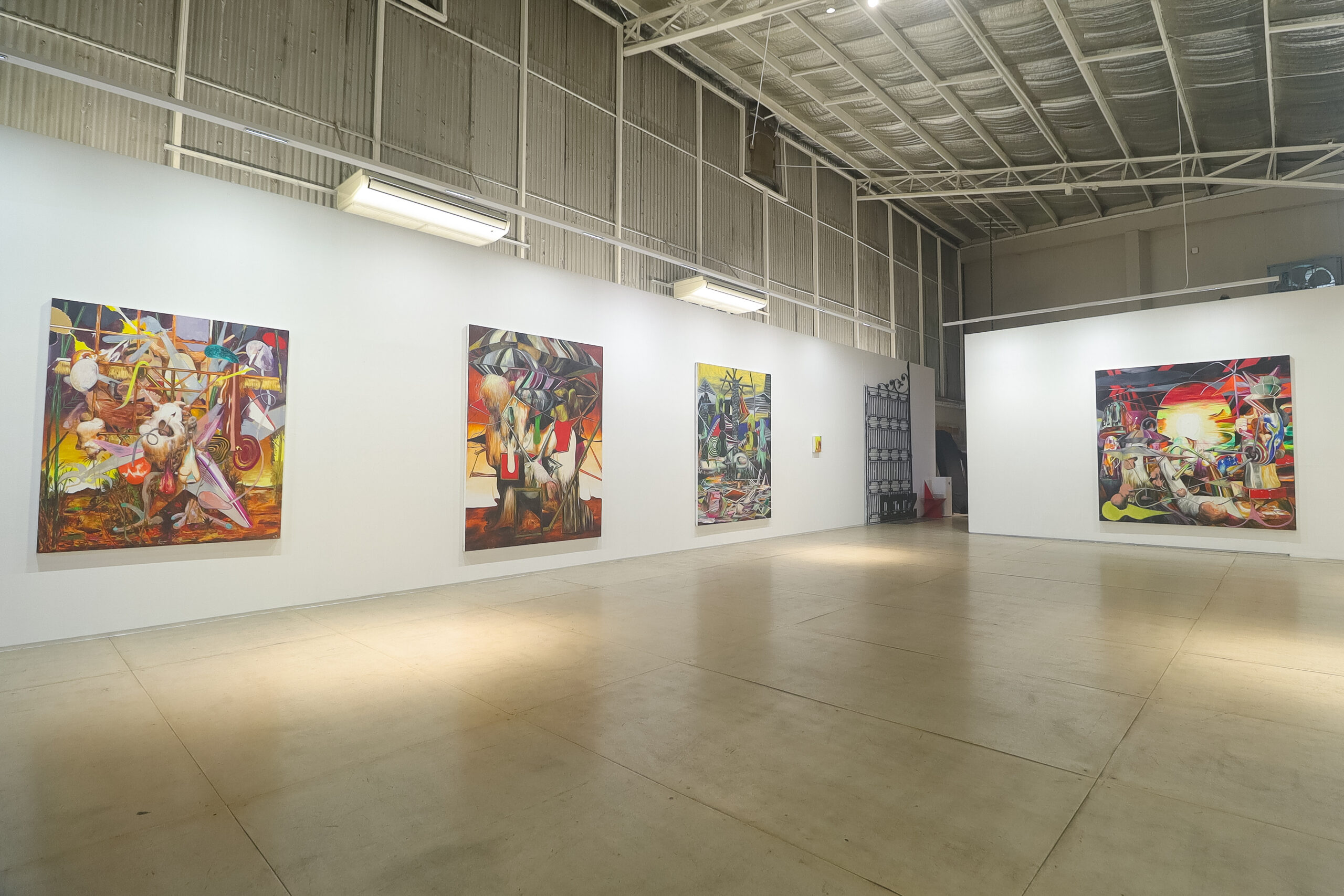The pristine gestures that traverse laterally and longitudinally across the surface of the canvas aiming to purify painting’s heavy task to illustrate naturally what the eyes can see, has been the trademark of abstraction since its inception, a cathartic purge to surrender to the medium’s limited material convention albeit with the ironic twist to actually revivify its terminal state via sublimation. In some unique cases, the challenge to fuse representational elements with the iconography of abstraction becomes the attraction to avoid the traps of material discourse by diving downwards into the depths of the subconscious. “Everything We Don’t Know” by Gene Paul Martin confronts the problems posed by the history of painting, creating a spectacular evisceration of what we do know of our modernist past into painterly amalgamations of ethno-futurism and animism, magical realism and mutant abstraction, as well as a haunting-ontological aesthetic on the idea of man.
Looming large like a crucifixion of a mutilated creature of existential angst spread all over with a whim to exhibit its merchandise components of post apocalyptic evolution, “Jungle God Apparition,” an imposing five by six foot oil painting, declares its war on the visual order of reason. Martin addresses the surface conventionality of what painting is with a grid scaffolding that immediately flattens the field depth of the illusionistic ground along with its figurative implosion. What we don’t completely see due to the foregrounding of a cornucopia of abstractly modified body parts, or other bestial organs having hairy hides while growing miscellaneous unnatural protuberances, and coincidentally breaking this composition using stellar bursts and Platonic shapes filled with dynamic blurs, is apparently harboring fertile brown soil void of any civilized manual exploitation.
Martin ups the ante next with a staggering eighteen by eight foot oil painting called “Fluctuations in the Existential Weight of Being,” a galactic terminal for anthropomorphic universals waiting for the next afterlife iteration of its avantgarde agenda, a waiting for Godot moment where time fluctuates exponentially along with its concerns on how to go on, a maximalist statement on entropy and the density of life outside its purported meaning, a modernist harangue.
“Shark Eating Painting,” a six by eight foot oil painting, is also a totemic testament of artistic reinvention amidst an aftershock of diagrammatic debris that morph into surviving abstractions, while the threat of predatory logic lurks ahead. The painting shape-shifts with fuzzy fluidic blends crashing into hard edged flanks and noise nurtured by vegetal assemblies. A fallout amber illuminates the scene.
A gateway to a celestial frontier is just behind an enigmatic portrait of a blinding auratic delight any possible filial deity would imbue while looking over its forsaken creation, as portrayed in “Orphans of the Sky,” a nine by nine foot oil painting. Guardians protect this otherworldly oracle to trip those undeserving of loving devotion. Vividly pure pigments point towards a central focus that create an inviting vista as modular scalar shapes perambulate this tantalizing tableau.
“Random Rules of Forming,” a six by eight foot oil painting, grows into a cloud of atomic spontaneity held up by an exoskeleton of weighted wooly drips and painterly zigzag, a motley crew of soft muscle and sturdy shells, involving a pet move for painting organization: a stacked composition of complex synchronic adjustments. Finally a “Soul Trap,” a six by eight inch oil painting, that exudes a captivating golden charm that would obsess your soul
forever. Martin reorganizes conventional portraiture with a play on head assembly, with a tiny hand holding a flat square that barely covers the eyes – apparently the windows to the soul, that permeates with longing desire. Gene Paul Martin’s “Everything We Don’t Know” reveals exactly the imaginative possibilities of painting outside the norms of its formal convention by creating fantastic compositions of aesthetic freedom according to the solid realities of our finite reach.
– Arvin Flores

